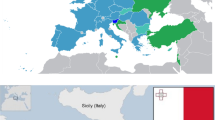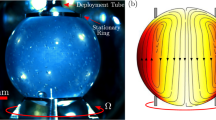Abstract
“Amyloid Aggregation” is an Italian Space Agency (ASI)-granted project designed to investigate if and how beta amyloid peptides aggregation is affected by microgravity, in the light of a possible professional risk in astronauts on long-lasting space missions. Researchers of the Istituto Zooprofilattico Sperimentale del Piemonte Liguria e Valle d'Aosta (IZSPLV) and the Istituto Superiore di Sanità (Ist.Sup.San) conceived the project while the Aerospace Logistics Technology Engineering Company (ALTEC) developed the payload. ARGOTEC/Telespazio (UTISS Team) supported safety evaluation, payload manifesting and qualification processes for a safe and efficient delivery, utilization, and integration on board the International Space Station (ISS), and finally recovery of the experimental hardware once returned to Earth. The hardware consisted of 48 special jars containing 6 different time period experimental groups and 2 control groups. In August 2019, during the “BEYOND” mission on board the ISS, astronaut Luca Parmitano activated individual jars according to a defined protocol. At the end of each Incubation Time Periods (ITPs), the samples were transferred in the cold stowage system to stop the aggregation reaction until the analysis after re-entry. Forty-eight identical samples have been prepared and activated in November 2019 on Earth. ALTEC developed jars and packaging for space transportation, qualified and delivered the flight hardware, according to requirements. We here provide an update on the optimization of analytical techniques described in the project specifically intended to warrant an up-to-date, robust and reliable examination of samples that we plan to accomplish in the next months within the proposed timeframe of the project.





Similar content being viewed by others
Abbreviations
- Aβ:
-
Amyloid β
- AD:
-
Alzheimer's disease
- AFM:
-
Atomic force microscopy
- ALTEC:
-
Aerospace Logistic Technology Engineering Company
- ASI:
-
Italian Space Agency
- AT:
-
Ambient temperature
- AFM:
-
Atomic force microscopy
- PBS:
-
Phosphate-buffered saline
- CNS:
-
Central Nervous System
- CS:
-
Cold stowage
- DLS:
-
Dynamic Light Scattering
- DMSO:
-
Dimethyl sulfoxide
- ESA:
-
European Space Agency
- HW:
-
Hardware
- ITP:
-
Incubation time periods
- ISS:
-
International Space Station
- Ist.Sup.San.:
-
Istituto Superiore di Sanità
- IZSPLV:
-
Istituto Zooprofilattico Sperimentale del Piemonte, Liguria e Valle d'Aosta
- KSC:
-
Kennedy Space Center
- MS:
-
Mass spectrometry
- NASA:
-
National Aeronautics and Space Administration
- PD:
-
Payload developer
- PI:
-
Principal investigator
- RT:
-
Room temperature
- SpX-18:
-
SpaceX-18
- UTISS Team:
-
ARGOTEC/Telespazio
- WB:
-
Western blotting
References
Nicogossian, A.E., Williams, R.S., Huntoon, C.L., Doarn, C.R., Polk, J.D., Schneider, V.S.: Space Physiology and Medicine. Lea & Febiger, Philadelphia (2016)
Kandarpa, K., Schneider, V., Ganapathy, K.: Human health during space travel: an overview. Neurol. India 67(Supplement), S176–S181 (2019)
Mishra, B., Luderer, U.: Reproductive hazards of space travel in women and men. Nat. Rev. Endocrinol. 15, 713–730 (2019)
Trudel, G., Shafer, J., Laneuville, O., Ramsay, T.: Characterizing the effect of exposure to microgravity on anemia: more space is worse. Am. J. Hematol. 95, 267–273 (2020)
Beheshti, A., Chakravarty, K., Fogle, H., Fazelinia, H., Silveira, W.A.D., Boyko, V., Polo, S.L., Saravia-Butler, A.M., Hardiman, G., Taylor, D., Galazka, J.M., Costes, S.V.: Multi-omics analysis of multiple missions to space reveal a theme of lipid dysregulation in mouse liver. Sci. Rep. 9, 19195 (2019)
Norsk, P.: Adaptation of the cardiovascular system to weightlessness: Surprises, paradoxes and implications for deep space missions. Acta Physiol. (Oxf). e13434 (2019). https://doi.org/10.1111/apha.13434
Auñón-Chancellor, S.M., Pattarini, J.M., Moll, S., Sargsyan, A.: Venous thrombosis during spaceflight. N. Engl. J. Med. 382, 89–90 (2020)
Coulombe, J.C., Senwar, B., Ferguson, V.L.: Spaceflight-induced bone tissue changes that affect bone quality and increase fracture risk. Curr. Osteoporos. Rep. (2020). https://doi.org/10.1007/s11914-019-00540-y
Rezvyakov, P.N., Shaimardanova, G.F., Lisukov, A.N., Kuznetsov, M.S., Islamov, R.R., Nikolskiy, E.E.: Morphological study of myelinated fibers of the sciatic nerve in mice after space flight and readaptation to the conditions of Earth gravity. Dokl. Biol. Sci. 482, 174–177 (2018)
Wojcik, P., Kini, A., Al Othman, B., Galdamez, L.A., Lee, A.G.: Spaceflight associated neuro-ocular syndrome. Curr. Opin. Neurol. 33, 62–67 (2020)
Roberts, D.R., Asemani, D., Nietert, P.J., Eckert, M.A., Inglesby, D.C., Bloomberg, J.J., George, M.S., Brown, T.R.: Prolonged microgravity affects human brain structure and function. AJNR Am. J. Neuroradiol. 40, 1878–1885 (2019)
Pompeiano, O., D’ascaino, P., Balaban, E., Centini, C., Pompeiano, M.: Gene expression in autonomic areas of the medulla and the central nucleus of the amygdala in rats during and after space flight. Neuroscience 124, 53–69 (2004)
Sarkar, P., Sarkar, S., Ramesh, V., Hayes, B.E., Thomas, R.L., Wilson, B.L., Kim, H., Barnes, S., Kulkarni, A., Pellis, N., Ramesh. G.T.: Proteomic analysis of mice hippocampus in simulated microgravity environment. J. Proteome Res. 5, 548–553 (2006)
Nilsberth, C., Westlind-Danielsson, A., Eckman, C.B., Condron, M.M., Axelman, K., Forsell, C., Stenh, C., Luthman, J., Teplow, D.B., Younkin, S.G., Näslund, J., Lannfelt. L.: The 'Arctic' APP mutation (E693G) causes Alzheimer's disease by enhanced Abeta protofibril formation. Nat. Neurosci. 4, 887–893 (2001)
Wiltfang, J., Arold, N., Neuhoff, V.: A new multiphasic buffer system for sodium dodecyl sulfate–polyacrylamide gel electrophoresis of proteins and peptides with molecular masses 100,000–1000, and their detection with picomolar sensitivity. Electrophoresis 12, 352–366 (1991)
Pryor, N.E., Moss, M.A., Hestekin, C.N.: Unraveling the early events of amyloid-β protein (Aβ) aggregation: techniques for the determination of Aβ aggregate size. Int. J. Mol. Sci. 13, 3038–3072 (2012)
Lawson, C.L., Hanson, R.J.: Solving Least Squares Problems. Prentice Hall, Englewood Cliffs (1974)
McPherson, A., DeLucas, L.J.: Microgravity protein crystallization. N.P.J. Microgravity 1, 15010 (2015)
Bell, D., Durrance, S., Kirk, D., Gutierrez, H., Woodard, D., Avendano, J., Sargent, J., Leite, C., Saldana, B., Melles, T., Jackson, S., Xu, S.: Self-assembly of protein fibrils in microgravity. Gravit. Space Res. 6, 10–26 (2018)
Amyloid protein “Amyloid fibril” extends under the microgravity environment—flash analysis report of the first “Amyloid” space experiment handled by astronaut Kanai https://iss.jaxa.jp/en/kiboexp/news/180719_amyloid.html. Accessed 30 March 2020 (2018)
NASA, Industry Partner for Space-Based Study of Potential Alzheimer’s Key https://www.nasa.gov/centers/marshall/news/industry-partner-for-space-based-study-of-alzheimers-key.html. Accessed 30 March 2020 (2019)
Teledyne Brown Engineering’s ring sheared drop advances research of neurodegenerative diseases https://tbe.com/news_and_events/press_release_view/teledyne-brown-engineerings-ring-sheared-drop-advances-research-of-neurodeg. Accessed 30 March 2020 (2019)
Chiti, F., Dobson, C.M.: Protein misfolding, amyloid formation, and human disease: a summary of progress over the last decade. Annu. Rev. Biochem. 86, 27–68 (2017)
Sprugnoli, G., Cagle, Y.D., Santarnecchi, E.: Microgravity and cosmic radiations during space exploration as a window into neurodegeneration on Earth. JAMA Neurol. 77, 157–158 (2019)
Acknowledgements
The investigation was made possible thanks to an agreement between ASI and ESA for national utilization of ESA resources in the frame of the mission “BEYOND”. This project is granted by Italian Space Agency contract ASI no. 2018-4-r.0. ASI is coordinating the program and providing the access to the ISS and to the onboard resources, thanks to the Memorandum of Understanding between ASI and NASA for the design, development, operation, and utilization of three mini pressurized logistic modules for the ISS. ASI avails of the industrial support from Telespazio and Argotec for the new payload integration, operations and logistic process implemented with NASA. ALTEC has performed the design, integration, verification and test of the jars and the special container.
Funding
Italian Space Agency contract ASI n. 2018–4-r.0
Author information
Authors and Affiliations
Corresponding author
Ethics declarations
Conflicts of interest
No conflict of interest.
Availability of data and material (data transparency)
Yes.
Code availability (software application or custom code)
Not applicable.
Additional information
Publisher's Note
Springer Nature remains neutral with regard to jurisdictional claims in published maps and institutional affiliations.
Rights and permissions
About this article
Cite this article
Berrone, E., Cardone, F., Corona, C. et al. The Amyloid Aggregation Study on Board the International Space Station, an Update. Aerotec. Missili Spaz. 99, 141–148 (2020). https://doi.org/10.1007/s42496-020-00049-z
Received:
Revised:
Accepted:
Published:
Issue Date:
DOI: https://doi.org/10.1007/s42496-020-00049-z




